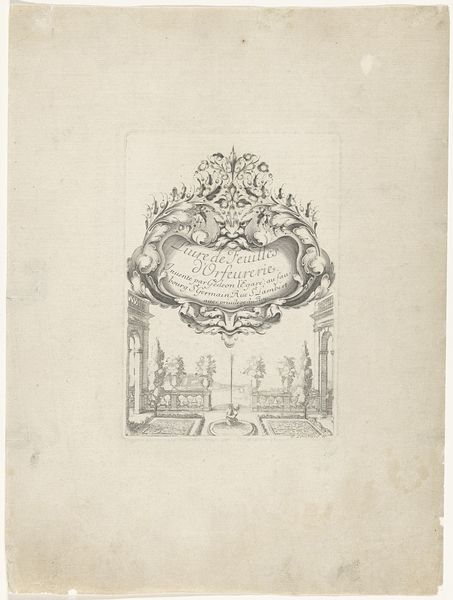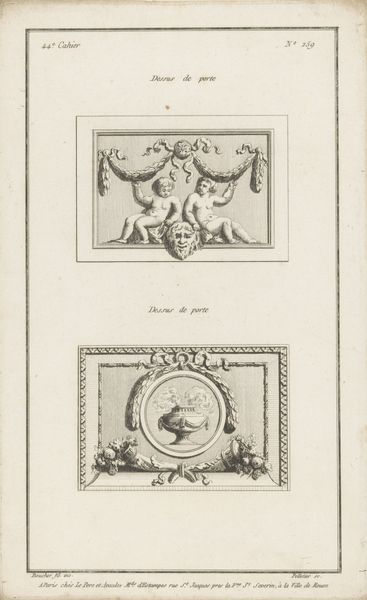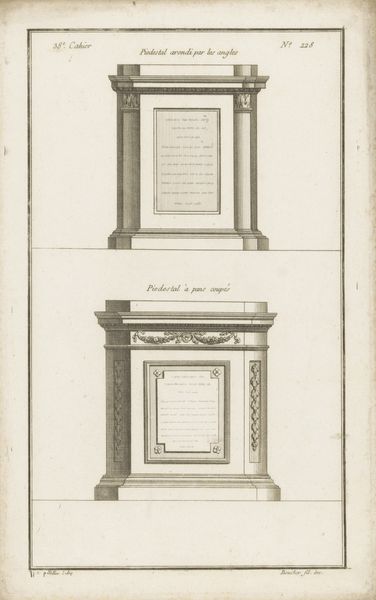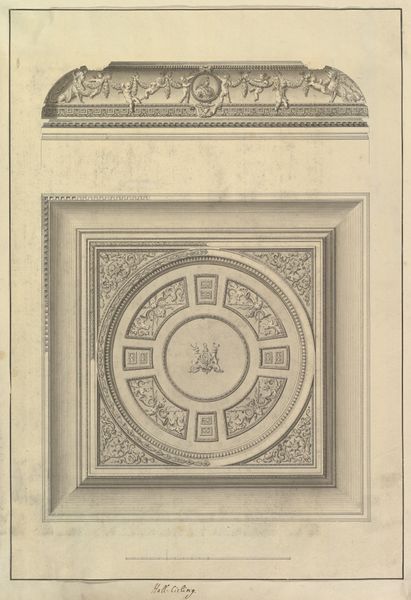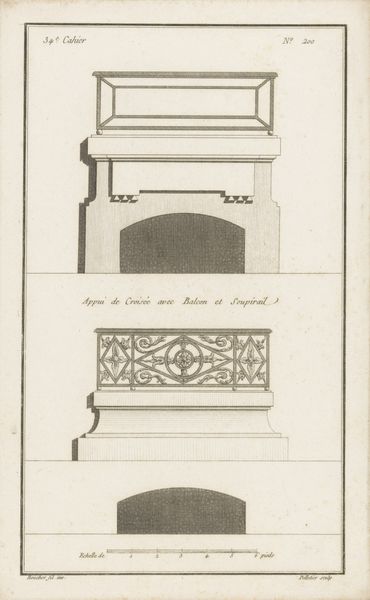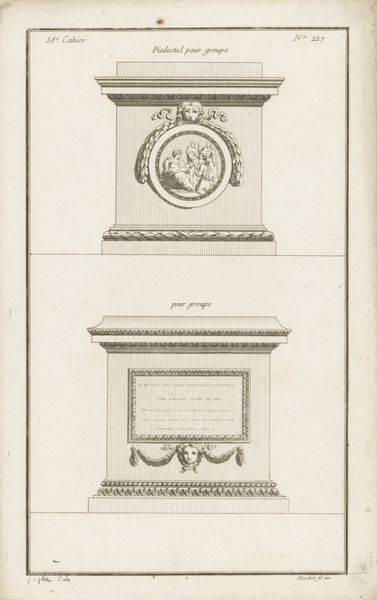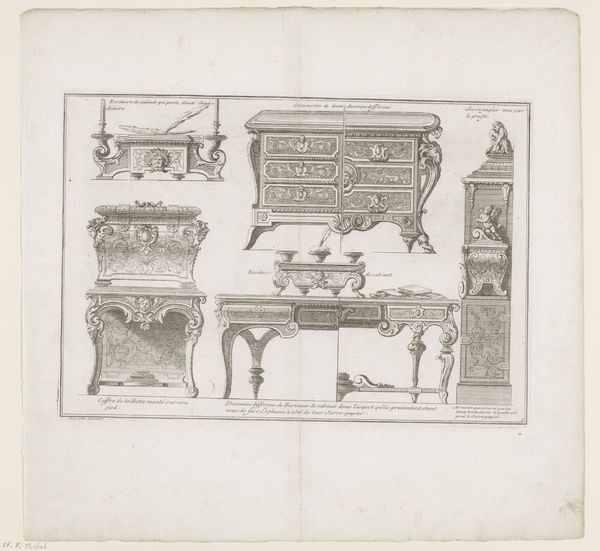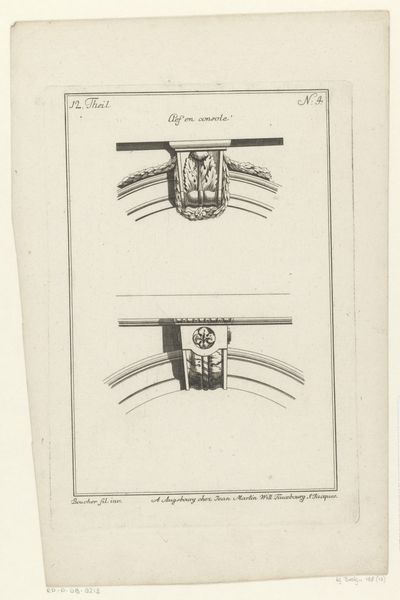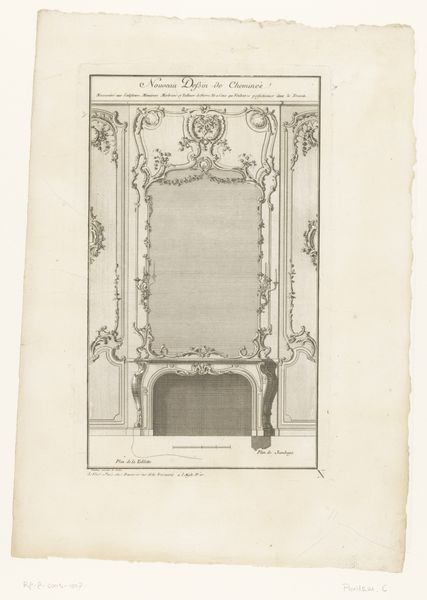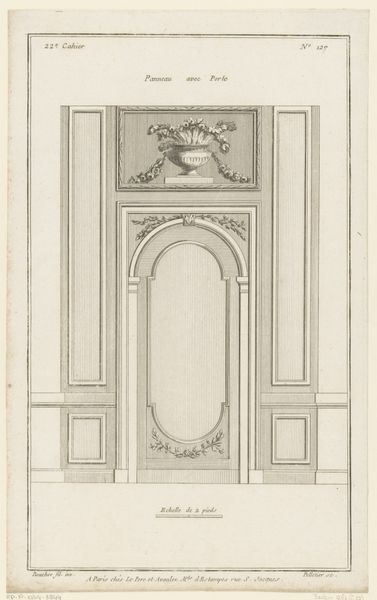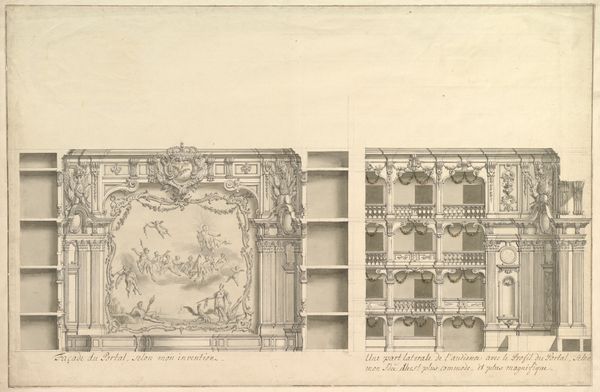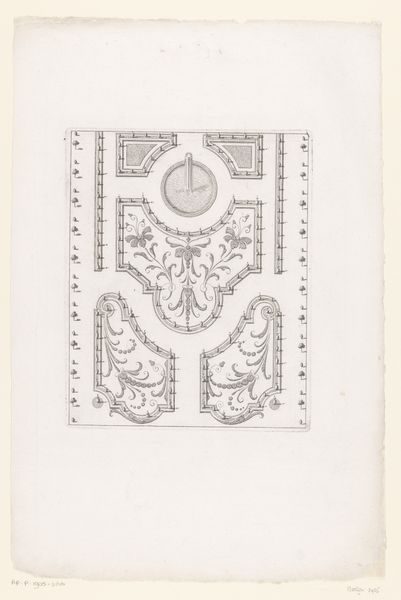
drawing, print, paper, engraving, architecture
#
drawing
#
neoclacissism
# print
#
paper
#
form
#
line
#
decorative-art
#
engraving
#
architecture
Dimensions: height 329 mm, width 205 mm
Copyright: Rijks Museum: Open Domain
Curator: Welcome. This engraving by Jean Pelletier, titled "Plafond met hoornen des overvloeds," dating from 1772 to 1779, offers us a glimpse into late 18th-century decorative arts. Editor: It’s so precise! Almost austere in its lines, but undeniably elegant. The architectural details rendered so meticulously give it a certain coolness, despite the subject of abundance. Curator: Indeed. Pelletier's rendering exemplifies Neoclassical principles – the emphasis on order, symmetry, and references to classical antiquity. The horn of plenty, or cornucopia, is a key motif. What do you think it signifies within this specific composition? Editor: Material wealth, obviously, but consider the craft required to produce architectural elements like this – the labor, the stone, the plaster, all mined and shaped. The print then makes this available for further labor, in construction. Curator: Absolutely. The engraving makes luxury accessible, spreading the design for wider adaptation. The design would allow many variations using accessible materials. Notice the other elements: rosettes, swags, and precisely drawn mouldings, creating a vision of idealized space. This wasn’t just about aesthetic pleasure but communicating status, projecting power through the built environment. Editor: Yes, this kind of ornamental drawing serves as a blueprint of labor as social display. Look how it references specific Parisian sites on the inscription! Its form allows the architect to control even the fine detailing on buildings produced at this scale. This also meant the designer-architect commanded considerable social influence. Curator: That’s very insightful. So the aesthetic preferences were also reflections of deeper social structures and power dynamics within 18th-century French society. These kinds of representations in turn influenced social change. Editor: I agree. Looking closely at how such designs circulated reveals so much about that era’s relationship between artistry, material production and lived experience. Curator: Well, exploring these themes opens up interesting new ways of perceiving not only art but the structures shaping it. Editor: Indeed. A detailed look reveals so much complexity beneath this facade of abundance and elegance.
Comments
No comments
Be the first to comment and join the conversation on the ultimate creative platform.

